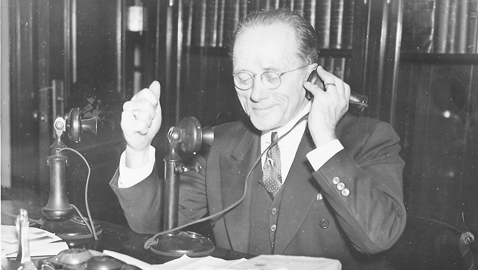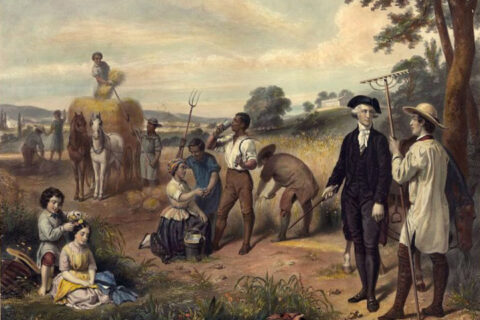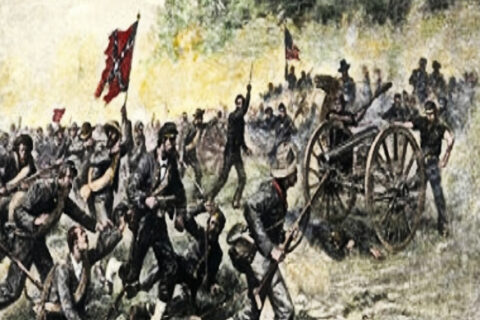The Reconstruction Era was one of the most crucial moments in all of Southern history, yet tends to be heavily overlooked or oversimplified by leftist historians. Despite their claims, the implementation of Jim Crow laws succeeded a far more complex scenario than the juvenile claim of simply the preservation of “white supremacy.” Reconstruction was a time of intense hopelessness and darkness, with the entirety of the antebellum Southern hierarchy being cast into disarray.
Many historians of the past, namely the all-but-forgotten and vilified Dunning School, wrote extensively of the horrors Southern whites faced during those trying times. While sympathies for the Southern people have faded due largely to Yankee rule over the generations, the truth of why the era of Jim Crow rose to existence has mostly faded as well. This essay seeks to discuss the plethora of nuanced ingredients, which mixed together, allowed for the rise of segregation and the much smaller, but controversial and integral, period known as the Populist Era.
Following the War, the antebellum Southern hierarchy had been thrown into extreme chaos. Many of the former aristocrats returned home to find they no longer had any wealth and were forced to live in poverty by Union invaders. Many of the already poverty stricken whites returned to find their homes destroyed and families starved. In addition to this chaotic lack of societal structure, the freed slaves were acting aggressively, and with impunity thanks to Union occupiers, towards whites. This crime was the greatest of all in the eyes of the much more hostile poor whites, as opposed to the generally more moderate former planter class, the latter of whom had been the former masters of this now free underclass.
Poor whites no longer had the insurance, provided through slavery, that kept them from being at the bottom of Southern society; they had to face the prospect of competing with former slaves for jobs, as well as, demographic replacement, with states like Mississippi, Louisiana, and South Carolina having a majority Negro population at the time. Additionally, they were angered by the oppression of military occupation and the denial of the right to vote and the lack of access to the aid they needed to regain the footing they had lost due to the war. Many began resorting to violence on a large scale because of the struggles they now faced.
The former planter class, some of whom survived the war with a large amount of their former wealth intact, witnessed this brewing hostility and violence emanating from the lower class. What arguably worried them the most was that much of that hostility was directed at thems. Poor whites strongly disliked the upper class planters and saw them as wealthy elites who only cared about hoarding wealth and little else, blaming them for the Negro problem they were having at the time. Planters saw the genocidal attitudes the lower class held towards them and the freed slaves, as poor whites moved to violent organizations such as the Ku Klux Klan, Red Shirts, White League and various rifle clubs.
/https://public-media.si-cdn.com/filer/ee/38/ee38f6f4-1e44-4822-a4a3-31f217b79b7d/granger_0016356_highres.jpg)
Poor Southerners were the primary constituents of these groups and struck fear into both Negroes and wealthy Whites.
Poor whites had suffered quite a good deal before and after the war, with much of their anger being justified, but what the upper class could see was something far worse on the horizon. The increased harshness of Reconstruction occupation, as well as, the potential destruction of any economic or political capital to be salvaged from Reconstruction weighed heavily on the shoulders of the former planters. In addition, they also had a heightened sense of self-preservation due to the increased hostility towards them and the freed slaves. Not only were they interested in self-preservation, as well as, a restoration of some sort of civility, a common point of motivation for former Confederate officers, they were also to some extent interested in the Negroes as continued laborers.
Additionally, Confederate officers were notorious for cucking against their former constituents in regards to racial equality and came primarily from the planter class, leading to further division and animosity being leveled at them from the poor whites. One of the most notorious examples of this behavior was James Longstreet’s actions and soiled reputation during Reconstruction. The violent poor class offered no solutions to the problems presented to the former planters. As a result, the planters, who still constituted the upper crust of Southern society, despite many having lost their fortunes, passed a series of laws that would come to be known as Jim Crow Laws following the Compromise of 1877, which had effectively ended the Reconstruction Era.
While Jim Crow laws had mitigated some of the woes of poor whites and reestablished a societal hierarchy, they still faced a plethora of issues and began addressing them through the means of politics. What followed was the Populist Era.
Many of the poor farmers faced little genuine representation within the political sphere and were not aided in their struggles much from the administrations of the Southern Bourbon Democrats, more commonly known as the Redeemers. The Redeemers had done much to pass Jim Crow legislation and restore order to the South, but they were constituted mostly of former planters and did little else to mitigate the struggles of the poor farmer. Ben Tillman, one of these planters, bucked the trend and began campaigning for the interests of the farmers, eventually winning the governorship of South Carolina from 1890 to 1894. During the same period, many agricultural movements formed in the South, including the Grangers, the Greenback Party, the People’s Party, and several others. Many of these culminated in a more populist oriented means of gaining Southern votes, as well as, an increasing level of hostility towards Negroes, a characteristic of poor whites that men like Ben Tillman catered to.
For the rest of the Jim Crow Era, populism remained the driving force behind much of Southern politics, with many of the most well known and greatest Southern populists rising from the Deep South, which included Ross Barnett of Mississippi, Strom Thurmond of South Carolina, Theodore Bilbo of Mississippi, Huey Long of Louisiana, George Wallace of Alabama, and Eugene Talmadge of Georgia. While the Deep South does extend into Florida and Texas, neither one of these states provided well known Southern Populist figures.

The late 19th century was a trying time for Dixie, as well as, an age of societal upheaval and realignment. Desolation from an unjust war, the problem of unrestrained Freedmen, class conflict, multi-generational poverty, the horrors of military occupation, and fears brought on by violence of the lower class ushered into effect the end of Reconstruction and the dawn of the Jim Crow Era and the Populist Era. These two overlapping eras had a profound effect on Southern society, and Southerners within contemporary America are consistently reminded of the faux-evil deeds their ancestors committed. Populism was, and to an extent still is but heavily suppressed, a part of Southern society and defined many generations of Southern politics and political thought. Though the roots of Jim Crow and Populism were mired in a dark period of history, the outcome was ultimately what can arguably be described as Dixie’s Golden Age.
“The White people of the South are the greatest minority in this nation. They deserve consideration and understanding instead of the persecution of twisted propaganda.” –Strom Thurmond






Something that has been lost in the interim since this populism has been suppressed nationwide, and more specifically in the South, is any leadership from what used to be this planter class.
The naturally hierarchical social structure of the South has been beheaded, and we are left with a broad working class southern population of rugged individualists, with no representation within the current yankee political system.
We were abandoned by the planter class, who has sold out to ZOG, or gone along with the occupational government to preserve their own wealth. The war was for their benefit, and to preserve the status quo of their outmoded slave based business model and abstracted conception of states rights.
Poor men fought and died for rich men’s pride.
And we are left with the bill for the legacy of their greed.
Our contempt should be reserved for the planters. The Yankees have done what they always have, consume the wealth of their vassal territories, like every empire before them.
There can be no Southern Nationalism in practice, with no intact hierarchy. At this point, as cynical and suspicious as rural whites are, I don’t even know if we could get back to how it was. It will require a strongman rising from the ashes of the disintegrating empire, stepping forward speaking directly to us and our interests.
That isn’t something likely to happen anytime soon.
We are better off putting our effort into building a coalition of southern and midwest states that are willing to step forward as an oppositional bloc to the empire, slowly reasserting themselves as the federal government loses legitimacy.
This is the established mechanism of federalism, and exists as a necessary check against federal imperial overreach. We already see the beginnings of this on specific issues like abortion and 2A, where states are banding together and passing similar legislation to stake their positions firmly to the right of the national establishment.
There is no other path to independence of any kind for us currently.
Its this, or sit on our hands and watch it fall apart, hoping for the best for our own lives.
National politics is a wasted effort. State politics, are not. Its well past time our thought leaders began to pivot away from the idea of national activism or anything else lending legitimacy to the two party sham system in Washington.